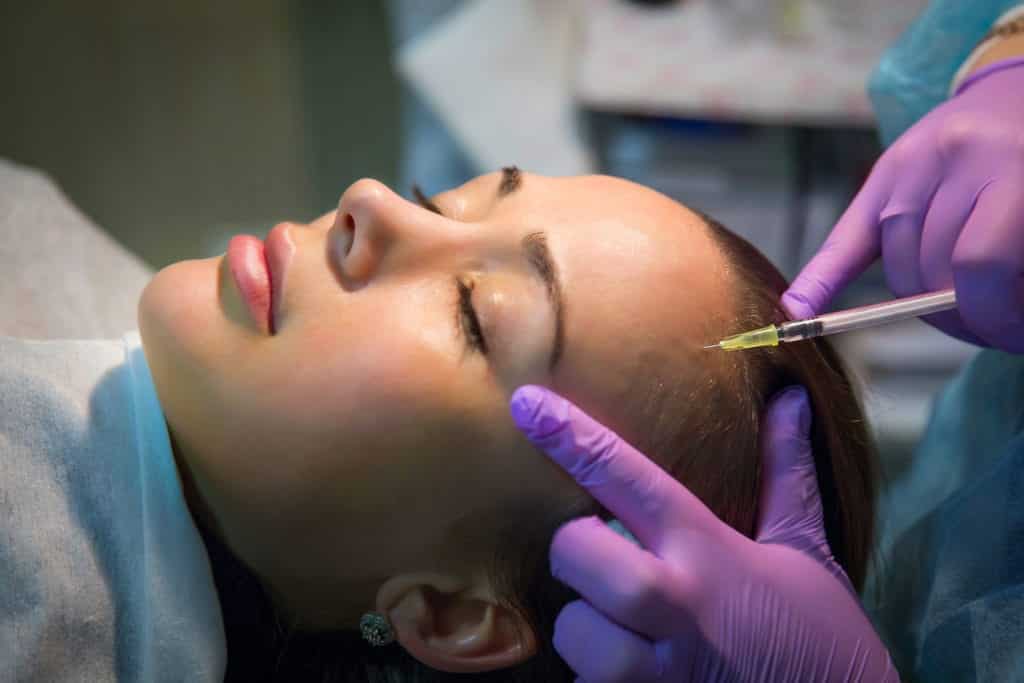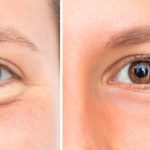

Botox has become a familiar, household name for anyone who cares for their skin. In fact, it is often the first treatment that comes to mind as wrinkles begin to appear. These are the five most common questions about Botox we are asked. Here’s how we answer.
The five most common questions about Botox
Is Botox safe?
The short answer: Yes.
Botox stands for botulinum toxin. It is the most recognizable name of the available neurotoxins (Dysport, Xeomin, and Jeuveau), all of which are derived from bacteria. While it might sound scary to have a toxin injected into you, Botox is extremely safe and has been used as a medical treatment for well over 50 years.
Botox was discovered in the 1820s by Dr. Justinus Kerner, and its safety and efficacy have been studied for decades. The US Food and Drug Administration (FDA) approved it as safe for medical use in 1989 and cosmetic use in 2002. Countless studies in scientific journals attest to its safety and efficacy profile (when injected by an experienced provider).
Today, it is the only treatment approved to improve crow’s feet, forehead lines, and frown lines. The amount of Botox used around the world is a testament to its safety. While over 13 million vials have been sold in the United States alone, Botox is approved in almost 100 countries.
A board-certified dermatologist or plastic surgeon is the right person to go to for this procedure.
Is Botox effective?
An experienced injector can target the correct amount of Botox into the intended muscle to achieve the desired effect of improving wrinkles. Most patients are extremely satisfied with the results, which appear within a few days.
Botox should be reinjected every four to six months initially to maintain optimal results. Gradually, your muscles will be “re-trained” to move less, so that over time, you will need fewer injections to maintain the desired result. For many patients, that is a more youthful, rested look.
In addition to improving appearance, Botox is an effective treatment for a variety of medical conditions, including hyperhidrosis (excess sweating) and migraines. Recently, Botox has been shown to improve mood as well.
How does Botox work?
Botox works by inhibiting muscle contractions – but how does that counteract facial lines?
Well, remember the old adage we attribute to our mothers: “Don’t make that face or it will stay like that”? Your mother was right.
Over time, the repeated contraction of muscles, combined with increasing laxity of skin, causes permanent creases or wrinkles to develop. Think of it like the dry cleaner pressing creases into your pants. After a few cleanings, those creases cannot be undone.
Of course there are many other factors that contribute to skin aging. Some factors affect everyone, and some are compounded by sun exposure and smoking.
The sun and overall environment are responsible for producing free radicals in the skin. Free radicals cause damage at the cellular level and thus induce a variety of changes. Your skin will lose collagen and elasticity, develop pigment abnormalities, and leave behind the “glow” of youth.
As our chronological age increases, so do the number of times we squint, frown, smile and look surprised. These facial expressions contribute to the eventual lines we call our “elevens” (between our brows), “crow’s feet” (around our eyes), and general “forehead lines.” Depending on our facial structure and pattern of movement, each of us develops a different pattern of wrinkling. (Your parent’s wrinkles may provide a sneak preview into the future.)
Over the last few years, Botox has been used more and more frequently in younger patients to prevent deep lines from forming. This may be surprising, but younger patients are much more attentive to all opportunities to keep themselves looking great for longer.
And the number of men receiving cosmetic treatments has literally tripled in the last decade, with over a million Botox treatments performed on men in just the last three years!
What should I expect from my Botox injections?
An experienced dermatologist will first evaluate your face to identify areas that will benefit from Botox. After this evaluation, Botox will be injected with a few small pinches (similar to mosquito bites). You will be ready to return to work or other regularly scheduled activities immediately afterward.
Because it takes a few hours for Botox to be fully absorbed by the muscle, you should avoid heavy exercise, laying with your face prone, or positioning your head upside down for a few hours. You will begin to notice results in a few days, and see the full effects in one to two weeks.
Some, but not all, patients require a quick touch-up at this point to achieve optimal correction.
When done correctly by an experienced injector, Botox gives a natural look. In other words, your face won’t be frozen; it will continue to show expression.
This is why it is so crucial that you be injected by an expert in facial anatomy, such as your dermatologist or plastic surgeon. Done right, friends and family will comment on how well-rested you look and ask if you made changes to your skincare routine. You will look like you, but with lines that are less noticeable.
What are some myths about Botox?
In addition to common questions about Botox, we field many questions about Botox myths. Many people think that they don’t have time for Botox or that changes will be permanent. Others are concerned that Botox will give them a “frozen” look, they’re too young for Botox, or Botox is only for people of one gender. None of these is true!
It’s also important to realize that everyone’s face moves differently. Injecting Botox is an art that involves figuring out which muscles are appropriate for treatment. Some of us have eyebrows that are naturally straight or naturally arched; each shape requires its own injection pattern.
The same is true for forehead lines. Sometimes the forehead muscles need to remain active to keep your brows lifted. This will be evaluated thoroughly by a skilled injector.
As a result of our individual anatomy and movement pattern, not everyone will be able to eliminate particular lines that might bother them. Just because your friend was able to erase all of her forehead lines doesn’t mean those results are achievable in you.
Botox works with busy schedules because the treatment itself takes less than ten minutes. Other than minor bruising in some patients, there is no downtime. Yes, there is maintenance every few months because the results are not permanent. Botox maintenance is not much different from going to your hairstylist to maintain hair color or your dentist to maintain healthy teeth and gums.
Find out if Botox is right for you
If you’d like talk to an expert and get an honest opinion about whether Botox is right for you, schedule a consultation with us. We will discuss your concerns and all options that are available to you. And of course, if you have questions beyond the most common questions about Botox, we are happy to answer them.
Posted In: FAQ
Related Posts

February 28, 2019
The Five Most Common Questions About Botox
Botox has become a familiar, household name for anyone who cares for their skin. In fact, it is often the first treatmen...

December 4, 2018
Sclerotherapy Treatment for Spider Veins: Everything You Need to Know
Sclerotherapy treatment for spider veins is an effective option for this unattractive condition. Spider veins are damage...

October 15, 2018
The Difference Between CoolSculpting versus Emsculpt
There are endless articles about CoolSculpting versus Emsculpt and which is better. They are two types of body contourin...


